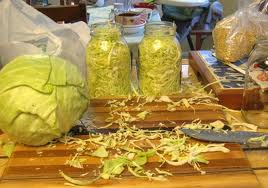L ast week I wrote about easy at home picking to save on waste and this week I want to share with you some tips I have come across while working in kitchens with items almost everyone has that usually end up as waste. Food is expensive and I want to help you utilize every bit of your groceries and prolong their uses to benefit you.
ast week I wrote about easy at home picking to save on waste and this week I want to share with you some tips I have come across while working in kitchens with items almost everyone has that usually end up as waste. Food is expensive and I want to help you utilize every bit of your groceries and prolong their uses to benefit you.
So here is a list of 20 ways to extend usage, save money, and create something delicious with food items that might normally be tossed away.
1) Adding cheese rind to stocks for flavor (can sometimes be used up to 2 or 3 times)
2) Don’t like the innards of your chicken? Boil them in plain water until cooked, portion them out, freeze them, and use them as occasional treats or meals for your dog or cat.
3) Leftover meat bones? Add the bones to the pot and cover them with water. Add two parts onion, one part celery and one part carrot and herbs. Bring to a boil and then simmer until you reach your desired flavor. This makes a delicious broth and a flavorful base to any soup or stew.
4) Reuse leftover store bought pickle juices for pickling!
5) Kale stems, chard stems, watermelon rinds, and unused left over veggies are perfect for pickling and great as toppings.
6) Stale chips, pretzels, crackers and cereals are delicious for breading meats, fish or tofu!
7) Use an extra sharp knife when cutting herbs. Dull knives break the cells in the herbs, causing them to brown and lose shelf life. By using a sharp knife, herbs can be prepped and tossed into baggies and saved in the fridge for days.
8) Corn husks can be saved over to make tamales or used to wrap delicate meats, fish or tofu before grilling and corn cobs can be boiled and used for stocks
9) Apple peels and cores can be boiled down and made into jellies and jams.
10) Potato, carrot, beet, turnip, apple, yucca and yam skins can be fried into homemade chips.
11) Broccoli stems can be shredded and made into slaw or added to stir fry’s.
12) Stale bread makes perfect croutons, stuffing and bread puddings and stale cookies make wonderful pie crusts.
13) Save fish bones and skin and shellfish shells to make seafood stocks.
14) Collect the juices when cutting tomatoes. This can be made into fresh juicing using a blender, or garden cocktails.
15) Wilted greens that no longer hold their crunch can be frozen and used for sautéing and smoothies.
16) Place leftover romaine hearts in 1 to ½ inch of water to sprout new romaine in a matter of days.
17) Carefully crack your egg shells so you are left with two shell halves (more or less). Place both halves in an empty carton so they look like little cups. These can be kept, filled with a little bit of soil and used as seed starters in your windowsill.
18) Save healthy looking stems (with at least some leaves still intact) from herbs and place them in water by a window. Most herbs can be grown hydroponically and will continue to grow throughout the winter and you will be able to replant in the summer.
19) Have too many leftovers? Heat them all up and serve a leftover shmorgishborg, family style. That way all the food is being passed around and eaten up in one night.
20) Have an understanding of expiration dates. For the post part, these dates are for the manufacturers and most foods remain fresh for several days after the “use-by date”.
